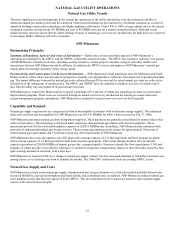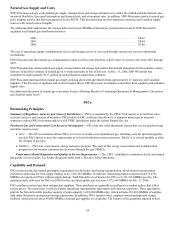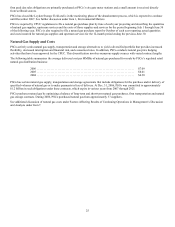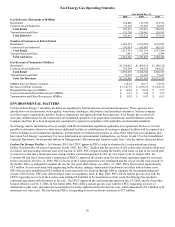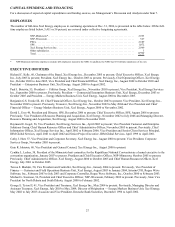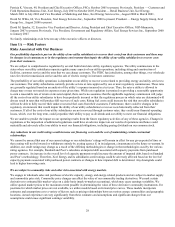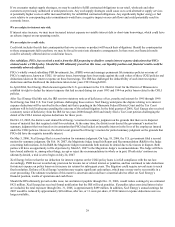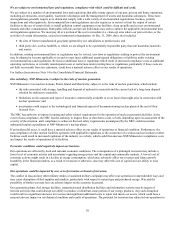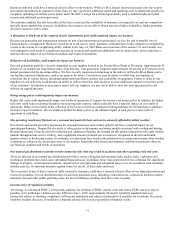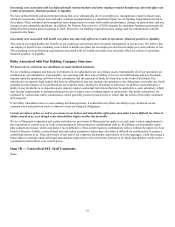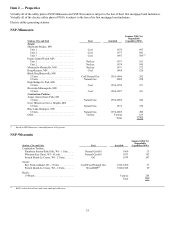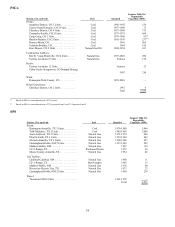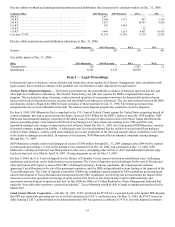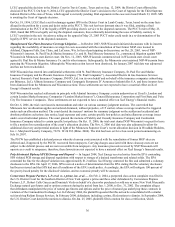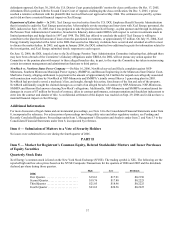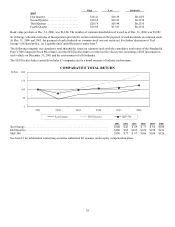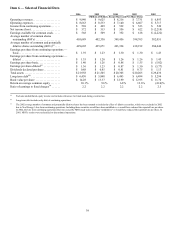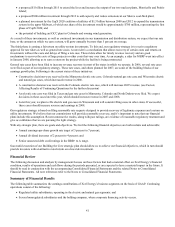Xcel Energy 2006 Annual Report Download - page 41
Download and view the complete annual report
Please find page 41 of the 2006 Xcel Energy annual report below. You can navigate through the pages in the report by either clicking on the pages listed below, or by using the keyword search tool below to find specific information within the annual report.31
increased risks and could have a material adverse effect on our business. While we have already incurred increased costs for security
and capital expenditures in response to these risks, we may experience additional capital and operating costs to implement security for
our plants, including our nuclear power plants under the NRC’s design basis threat requirements, such as additional physical plant
security and additional security personnel.
The insurance industry has also been affected by these events and the availability of insurance covering risks we and our competitors
typically insure against may decrease. In addition, the insurance we are able to obtain may have higher deductibles, higher premiums
and more restrictive policy terms.
A disruption or black-out of the regional electric transmission grid could negatively impact our business.
Because our generation and transmission systems are part of an interconnected regional grid, we face the risk of possible loss of
business due to a disruption or black-out caused by an event (severe storm, generator or transmission facility outage) on a neighboring
system or the actions of a neighboring utility, similar to the Aug. 14, 2003 black-out in portions of the eastern U.S. and Canada. Any
such disruption could result in a significant decrease in revenues and significant additional costs to repair assets, which could have a
material adverse impact on our financial condition and results of operations.
Reduced coal availability could negatively impact our business.
Our coal generation portfolio is heavily dependent on coal supplies located in the Powder River Basin of Wyoming. Approximately 85
percent of our annual coal requirement comes from this area. Coal generation comprises approximately 60 percent to 85 percent of our
annual generation for the operating utilities. We have recently experienced disruptions in the delivery of Powder River Basin coal to
our facilities and such disruptions could occur again in the future. Coal delivery may be subject to short-term interruptions or
reductions due to various factors, including transportation problems, weather and availability of equipment. Failure or delay by our
suppliers of coal deliveries could disrupt our ability to deliver electricity and require us to incur additional expenses to meet the needs
of our customers. In addition, as agreements expire with our suppliers, we may not be able to enter into new agreements for coal
delivery on equivalent terms.
Rising energy prices could negatively impact our business.
Higher fuel costs could significantly impact our results of operations, if requests for recovery are unsuccessful. In addition, the higher
fuel costs could reduce customer demand or increase bad debt expense, which could also have a material impact on our results of
operations. Delays in the timing of the collection of fuel cost recoveries as compared with expenditures for fuel purchases could have
an impact on our cash flows. We are unable to predict the future prices or the ultimate impact of such prices on our results of
operations or cash flows.
Our operating results may fluctuate on a seasonal and quarterly basis and can be adversely affected by milder weather.
Our electric and natural gas utility businesses are seasonal businesses and weather patterns can have a material impact on our
operating performance. Demand for electricity is often greater in the summer and winter months associated with cooling and heating.
Because natural gas is heavily used for residential and commercial heating, the demand for this product depends heavily upon weather
patterns throughout our service territory, and a significant amount of natural gas revenues are recognized in the first and fourth
quarters related to the heating season. Accordingly, our operations have historically generated less revenues and income when weather
conditions are milder in the winter and cooler in the summer. Unusually mild winters and summers could have an adverse effect on
our financial condition and results of operations.
Our natural gas distribution activities involve numerous risks that may result in accidents and other operating risks and costs.
There are inherent in our natural gas distribution activities a variety of hazards and operating risks, such as leaks, explosions and
mechanical problems that could cause substantial financial losses. In addition, these risks could result in loss of human life, significant
damage to property, environmental pollution, impairment of our operations and substantial losses to us. In accordance with customary
industry practice, we maintain insurance against some, but not all, of these risks and losses.
The occurrence of any of these events not fully covered by insurance could have a material adverse effect on our financial position and
results of operations. For our distribution lines located near populated areas, including residential areas, commercial business centers,
industrial sites and other public gathering areas, the level of damages resulting from these risks is greater.
Increase risks of regulatory penalties
The Energy Act increased FERC’s civil penalty authority for violation of FERC statutes, rules and orders. FERC can now impose
penalties of $1 million per violation per day. Effective June 1, 2007, approximately 80 electric reliability standards that were
historically subject to voluntary compliance will become mandatory and subject to potential civil penalties for violations. If a serious
reliability incident did occur, it could have a material adverse effect on our operations or financial results.



